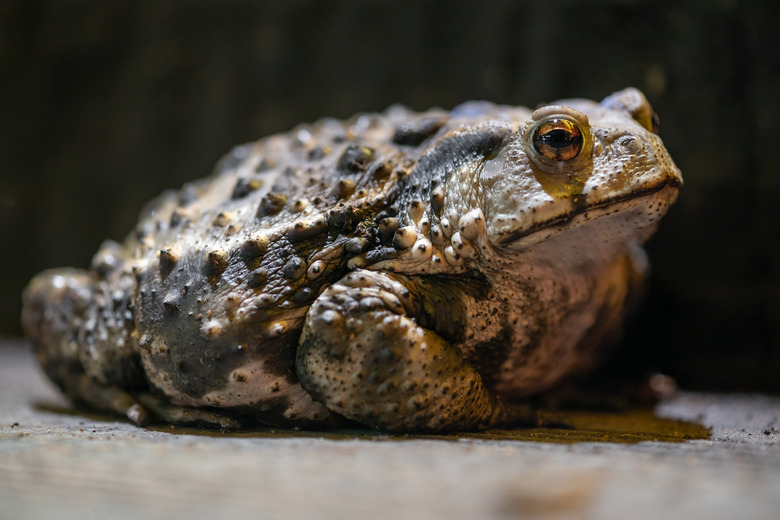How To Tell A Male Toad From A Female
If you find yourself near a toad who is vocalizing loudly, you have most likely disturbed a male toad. Males are endowed with vocal sacs that they use quite often, particularly during mating season to call females. Now, if you happen to see two toads together, the larger one is usually the female. Since their sex organs are internal, it can be difficult to tell males from females. Fortunately, using a variety of methods helps confirm toad gender.
Tell toad gender by size
Tell toad gender by size
A fairly reliable way to sex toads is by their size. Unlike most animal species, female toads tend to be significantly larger than males — about 4 inches to 4.5 inches for females compared to between 2 inches and 3 inches for males. This is especially true of the American toad, Fowler's toad, and woodhouse toads. Females are larger in overall size and are fatter, especially when carrying eggs. Male toads do have much thicker arms, though, while females' arms are noticeably thinner.
Hear their sweet songs
Hear their sweet songs
Some toads don't just croak; they sing. The American toad is described as having the sweetest song of all toads. It actually sounds like a song and can last for 30 seconds. That may not sound long, but if you think of it as roughly the length of a 30-second television commercial, imagine a small toad holding his note and even trilling it for that length of time. The American toad is also called the Eastern American toad because they are found in the eastern United States and the northern Midwest up to Canada. However, they can also be found as far west as northeastern Texas.
While it was believed that female toads choose their mates according to their size, with larger toads being preferred, studies have shown that females choose mates by their appealing calls as well. With their long, shrill, musical calls, males seem to try to outdo other males to attract females, and this tactic does appear to work for them.
Check for colors, bumps, and toe pads
Check for colors, bumps, and toe pads
Although toads are often depicted with bumpy, warty skin, it's actually only the females who have this characteristic; male toads have smoother skin. Coloring can differ between males and females too, most notably that male toads have a dark vocal sac because of the amount of vocalizing they perform.
During the mating season, males develop thick, spiny pads between the thumb and first finger, sometimes called nuptial pads or copulatory pads, that help them grab onto the female during mating. It seems that these pads also secrete hormones and pheromones that attract females and encourage them to release their eggs, which appear in a long string.
Note the position of the male
Note the position of the male
Another way to tell toad gender is that male toads sit atop the females' back during mating, which may be why nature made male toads smaller than females. They can stay in this position for days at a time if necessary while the female releases up to 20,000 eggs.
Using his nuptial pads, the male toad squeezes the female's sides to encourage release of the eggs. Having the male on top enables him to fertilize the eggs as they are released. Note, however, that although you can be sure the toad on top is a male, the toad on the bottom may also be a male.
Watch toads hop, not leap
Watch toads hop, not leap
When identifying toad gender, it is of course important to be sure you are sexing toads and not frogs, for the two can easily be confused. Like male toads, male frogs also have smoother skin than female frogs, but that fact does not help in telling toads from frogs.
One way to do so is to watch how they move. While frogs use their long back legs to leap in the air and over to where they want to go, toads do not. Rather, toads hop but do not leap, and sometimes, they seem to walk to get to their destinations.
